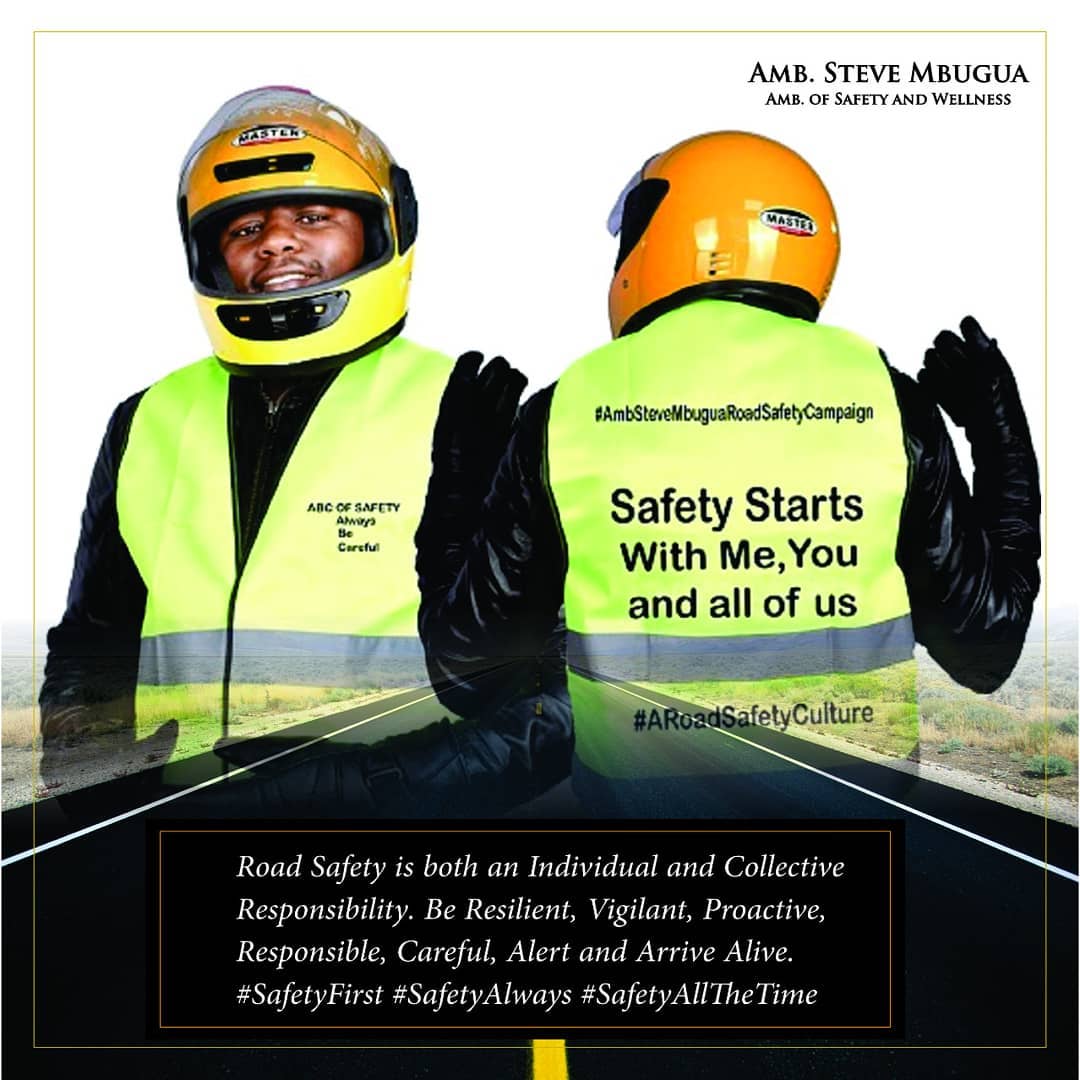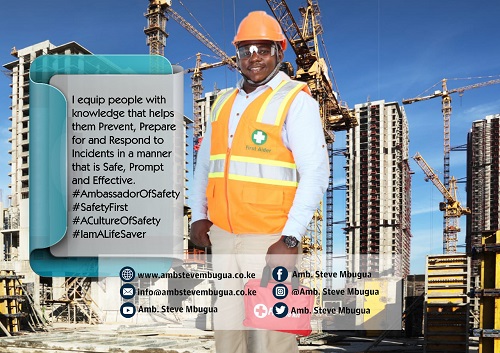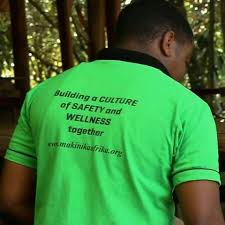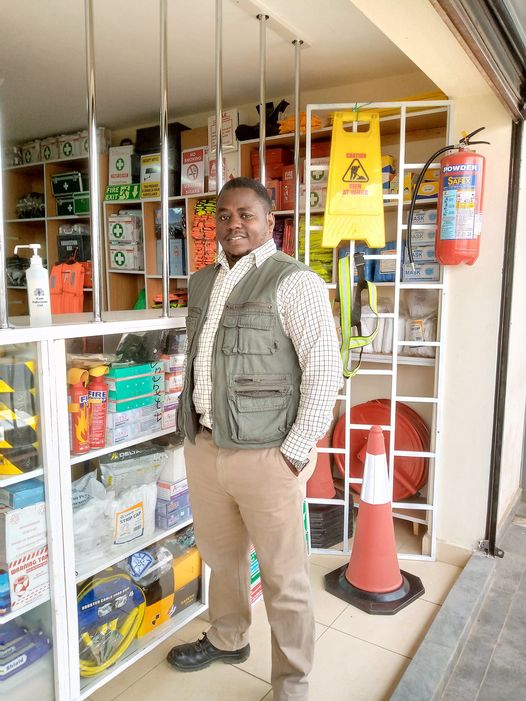Introduction to Safety By Design
As Ambassador Steve Mbugua, a globally recognized Ambassador of Safety, my mission is to help build a culture of safety by providing appropriate safety equipment and knowledge that equips individuals and organizations to prevent, prepare for, and respond to incidents in a prompt, safe, and secure manner. I have dedicated my career to championing the cause of safety across various sectors, from workplace safety to church safety, and I have written extensively on the subject, including books and blogs available on www.ambstevembugua.co.ke. This article dives into the concept of Safety by Design, a forward-thinking approach that embeds safety into the fabric of every design and process from the very beginning.
The concept of Safety by Design calls for a paradigm shift in how we think about safety. Rather than treating safety as an afterthought or a set of rules to follow, we need to move toward a proactive, integrated approach. In this article, we will explore the core mindset shifts required to foster a safety culture, the importance of understanding your niche as a safety champion, and how data can be leveraged to improve safety outcomes. We will also delve into the risks posed by the normalization of deviance, the dangers of complacency, and the need for sustainability in safety practices.
Shifting Ideologies Toward Safety by Design
The Traditional Approach to Safety
In many industries, safety has historically been seen as a set of regulations imposed on top of existing operations. Compliance with these regulations is often reactive, responding to accidents or hazards after they have already occurred. While this approach can mitigate risk, it does little to prevent incidents from happening in the first place.
The Safety by Design Mindset
The Safety by Design ideology requires a fundamental shift from reactive safety management to proactive integration. This involves embedding safety into every stage of a project or product’s lifecycle, from concept through design, production, and maintenance. It is about anticipating risks and designing out hazards before they can manifest. Key elements of this mindset include:
- Proactive Hazard Identification: Consider safety implications in the early stages of design and development.
- Risk Elimination Over Mitigation: Aim to design systems, processes, or products that eliminate hazards rather than merely controlling them.
- Collaboration Across Disciplines: Safety should not be the responsibility of one department; it must be integrated into every level of decision-making.
This approach not only improves safety outcomes but also enhances overall operational efficiency by reducing the potential for costly accidents or shutdowns.
Understanding Your Niche as a Safety Champion
Being a safety champion involves more than just implementing safety measures; it’s about becoming an advocate for safety in your specific field or industry. Each sector, be it construction, manufacturing, healthcare, or even church ushering, has its unique risks and safety requirements. As a safety champion, it is crucial to:
- Understand the Specific Risks of Your Niche: Know the hazards that are specific to your industry and how they can be addressed through design and process improvements.
- Advocate for Safety Across the Organization: Engage leadership and staff at all levels to make safety an organizational priority.
- Lead by Example: Set a standard for safety within your team or organization by consistently applying best practices and encouraging others to do the same.
For instance, in my work advocating for safety across industries, I have tailored solutions to meet the unique needs of various sectors, from church safety to occupational health and safety. By understanding the specific needs of each niche, I have been able to implement solutions that are practical, effective, and sustainable.
The Power of Data in Safety by Design
In today’s digital age, data plays a pivotal role in enhancing safety outcomes. Organizations that embrace data-driven safety practices are able to:
- Identify Trends and Hazards: Data helps organizations recognize recurring incidents and potential hazards before they escalate into serious problems.
- Predictive Analysis: By analyzing historical data, organizations can predict where future risks might arise and take steps to mitigate them.
- Continuous Improvement: Regularly reviewing safety data enables continuous improvements in processes, policies, and designs.
For example, data analytics in workplace safety can be used to identify the root causes of accidents, track the effectiveness of safety interventions, and optimize training programs. In my capacity as an advocate for safety, I encourage organizations to harness the power of data to drive safety improvements.
Normalization of Deviance: The Silent Risk
One of the most dangerous trends in safety culture is the normalization of deviance. This occurs when individuals or organizations become so accustomed to unsafe practices that they become the norm. Over time, deviations from established safety protocols are overlooked or accepted as standard behavior, leading to an increased risk of accidents.
Understanding Normalization of Deviance
Normalization of deviance often happens gradually. Small, seemingly insignificant breaches in safety protocols become more frequent, and eventually, these deviations are no longer seen as risks. The danger lies in the fact that, while these practices may not result in immediate harm, they create vulnerabilities that can lead to catastrophic failures.
Preventing Normalization of Deviance
To counter this risk, it’s essential to:
- Maintain Vigilance: Regularly review and reinforce safety protocols.
- Encourage Reporting: Foster an environment where employees feel comfortable reporting unsafe behaviors or conditions.
- Regular Audits: Conduct regular safety audits to ensure compliance with safety standards and prevent the normalization of deviance.
As a safety ambassador, I have seen firsthand how normalization of deviance can undermine even the most robust safety systems. It is vital to remain vigilant and address deviations before they become ingrained in the organizational culture.
Complacency: A Key Threat to Safety
Complacency is another significant threat to maintaining a strong safety culture. When organizations or individuals become too comfortable with their safety practices, they may begin to overlook potential hazards. This can lead to a decline in safety standards and an increase in accidents.
Fighting Complacency
To combat complacency, organizations must:
- Stay Engaged: Keep safety at the forefront of daily operations through regular training, communication, and leadership involvement.
- Promote Continuous Learning: Encourage staff to continuously update their safety knowledge and skills.
- Celebrate Safety Successes: Recognize and reward teams or individuals who demonstrate a commitment to safety excellence.
In my experience, maintaining a culture of safety requires constant vigilance. Complacency can set in quickly, but by promoting continuous engagement with safety practices, organizations can maintain high standards and reduce risk.
Sustainability in Safety Practices
Sustainability in safety is about ensuring that safety practices are not only effective today but can be maintained in the long term. This requires:
- Integration into Core Business Practices: Safety should not be a separate function but part of the organization’s DNA.
- Investment in Training and Resources: Sustainable safety practices require ongoing investment in training, equipment, and resources.
- Adapting to Change: As industries evolve, so too must safety practices. Organizations must be willing to adapt and innovate to keep up with new risks and challenges.
Conclusion
Safety by Design is more than just a strategy; it’s a philosophy that should be embedded in every aspect of organizational planning and operation. As an advocate for safety, I urge organizations and individuals to embrace this proactive approach. By shifting our mindset, understanding our specific safety needs, leveraging data, combating complacency, and addressing the normalization of deviance, we can build a culture of safety that is both effective and sustainable.
As a safety ambassador, my mission is to help build this culture of safety by providing quality safety equipment and knowledge. I invite you to explore my safety books and blogs at www.ambstevembugua.co.ke, or reach out to me via WhatsApp at +254724036078 or email at info@ambstevembugua.co.ke. Join me in this journey to create a safer, more secure environment for all.
READ MORE


















